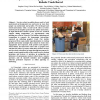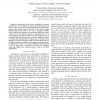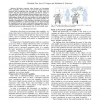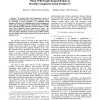ROMAN
2015
IEEE
8 years 9 months ago
2015
IEEE
— Service robots in public places need to both understand environmental cues and move in ways that people can understand and predict. We developed and tested interactions with a ...
ROMAN
2015
IEEE
8 years 9 months ago
2015
IEEE
— When a mobile robot interacts with a group of people, it has to consider its position and orientation. We introduce a novel study aimed at generating hypotheses on suitable beh...
ROMAN
2015
IEEE
8 years 9 months ago
2015
IEEE
— Autonomous social robots embedded in human societies have to be sensitive to human social interactions and thus to moral norms and principles guiding these interactions. Action...
ROMAN
2015
IEEE
8 years 9 months ago
2015
IEEE
— Robotics research often focuses on increasing robot capability. If end users do not perceive these increases, however, user acceptance may not improve. In this work, we explore...
ROMAN
2015
IEEE
8 years 9 months ago
2015
IEEE
—The study of the telepresence robot as a tool for telecommunication from a remote location is attracting a considerable amount of attention. However, the problem arises that a t...
ROMAN
2015
IEEE
8 years 9 months ago
2015
IEEE
— We propose that moral competence consists of five distinct but related elements: (1) having a system of norms; (2) mastering a moral vocabulary; (3) exhibiting moral cognition ...
ROMAN
2015
IEEE
8 years 9 months ago
2015
IEEE
ROMAN
2015
IEEE
8 years 9 months ago
2015
IEEE
— The demand is growing that a robot manipulates a deformable object. Scenarios for both of a grasping point and transfer of grasped point are required, in order to manipulate a ...
ROMAN
2015
IEEE
8 years 9 months ago
2015
IEEE
— HRI is a multi-disciplinary research field and integrating the range of expertise into a single project can be challenging. Enabling experts on human behavior to design fluen...
ROMAN
2015
IEEE
8 years 9 months ago
2015
IEEE
— In this study, we examined how participants (N=20) interacted and collaborated with a set of robotic drawers to accomplish an assembly task. The drawers’ behavior varied alon...





